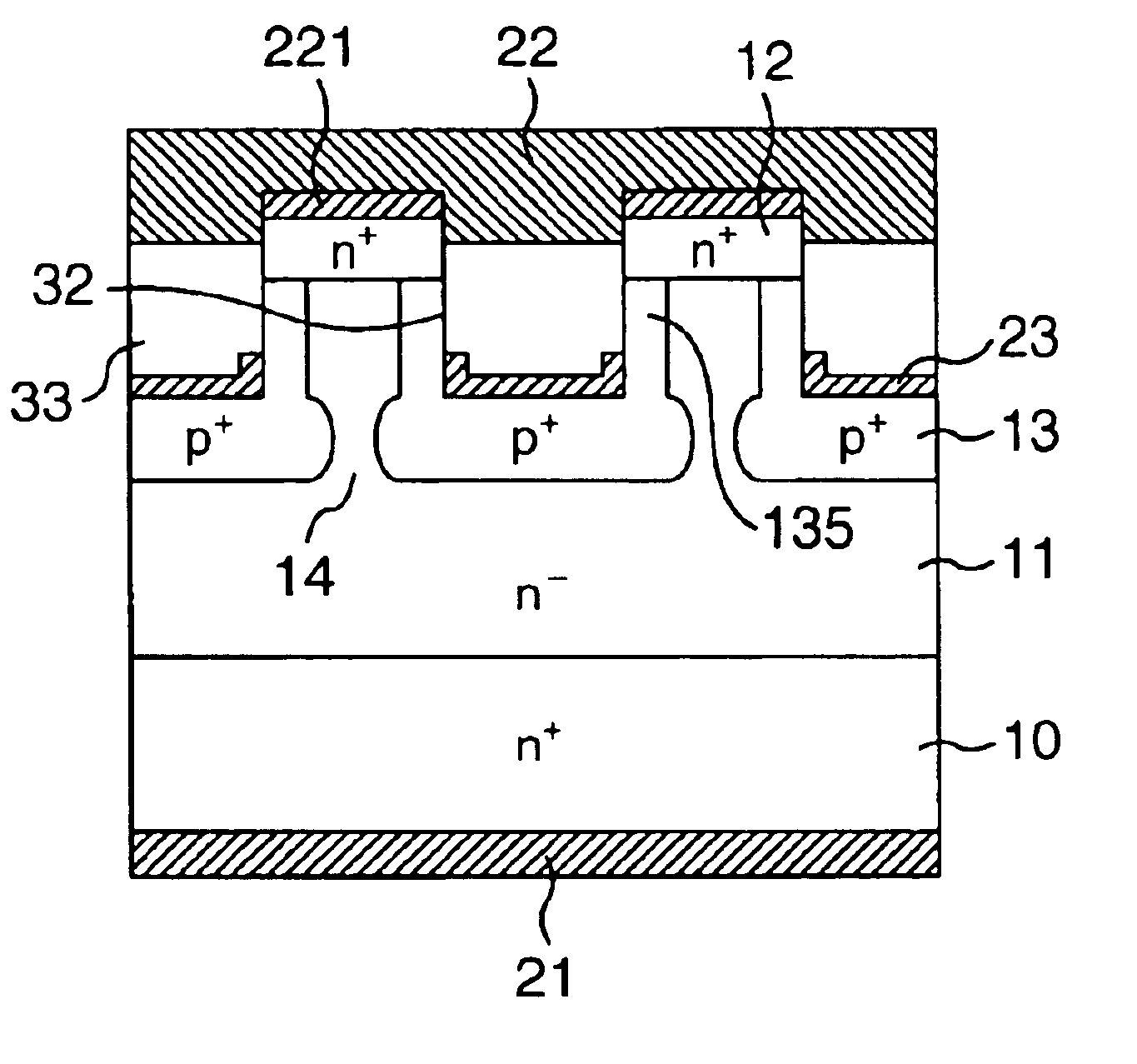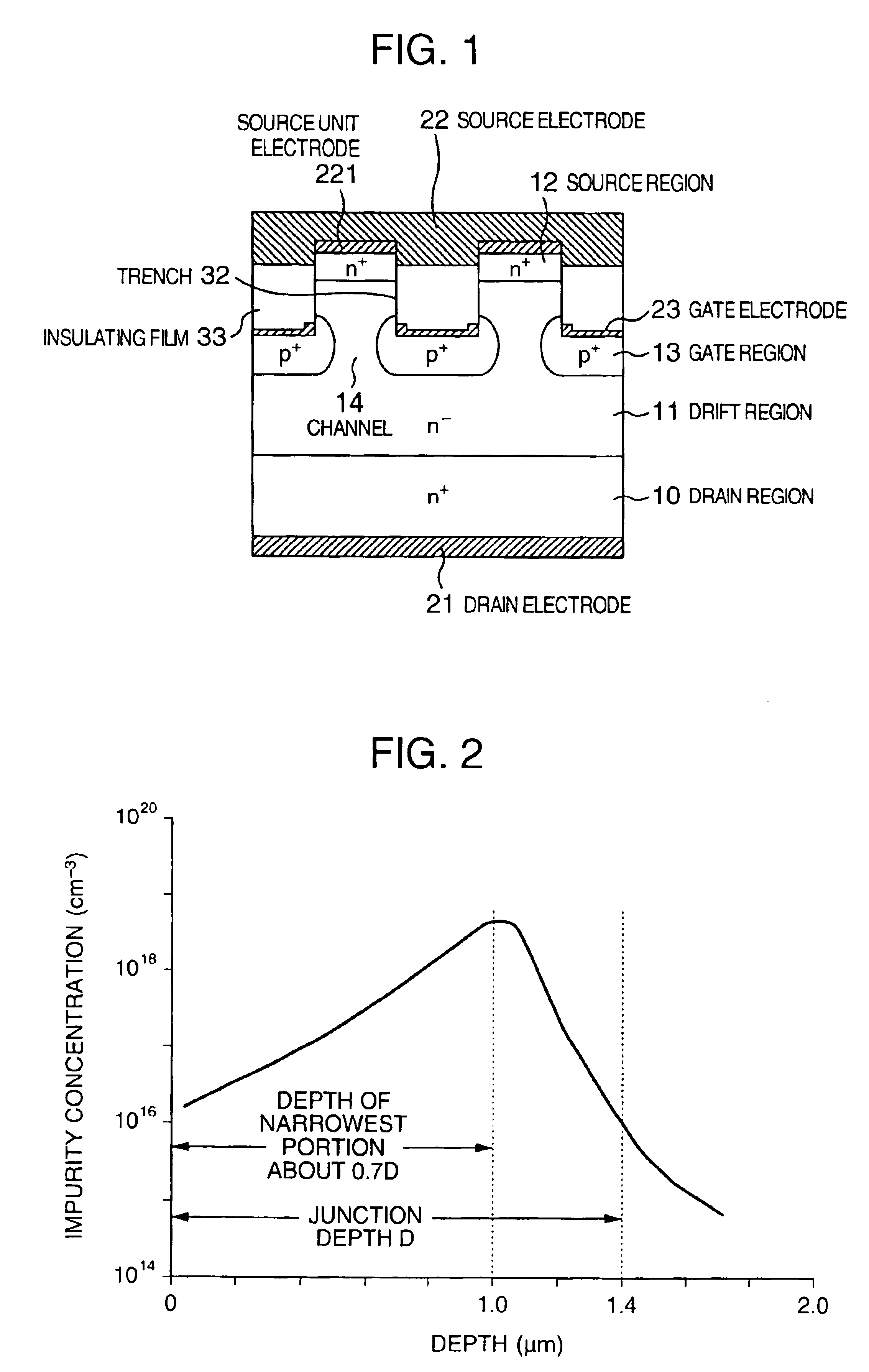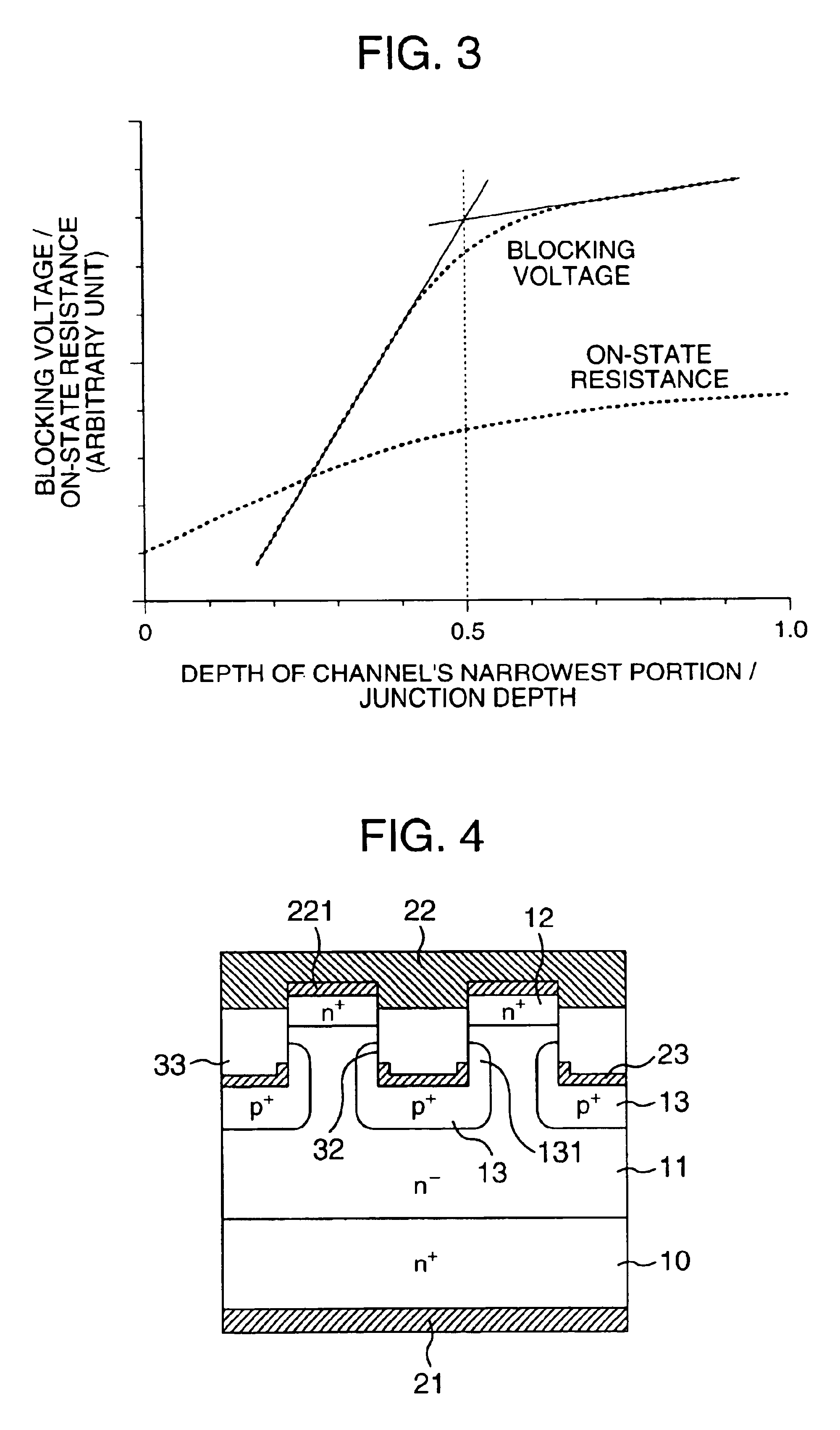Semiconductor device
- Summary
- Abstract
- Description
- Claims
- Application Information
AI Technical Summary
Benefits of technology
Problems solved by technology
Method used
Image
Examples
Embodiment Construction
[0028]Now, embodiments of the present invention will be described in detail by referring to the accompanying drawings.
[0029]FIG. 1 is a cross-sectional view showing a structure of a SIT as a first embodiment of this invention. In the figure, numeral 11 denotes an n-type drift region, formed by a substrate of a first conductivity type with a low impurity concentration (which region will be referred to as either drift region 11 or substrate 11, hereinafter). An n+ drain region 10 is a first region formed on a first plane of the n-type drift region (substrate) 11 which has the same conductivity type n as, and a lower resistance than the drift region 11. An n-type source region 12 is a second region formed on a second plane of the substrate 11 which has the same conduction type n as the substrate 11. Reference number 32 designates a trench formed in the second plane of the drift region (substrate) 11. Spreading from a bottom of this trench 32 into the substrate 11 is a gate region 13, w...
PUM
 Login to View More
Login to View More Abstract
Description
Claims
Application Information
 Login to View More
Login to View More - R&D
- Intellectual Property
- Life Sciences
- Materials
- Tech Scout
- Unparalleled Data Quality
- Higher Quality Content
- 60% Fewer Hallucinations
Browse by: Latest US Patents, China's latest patents, Technical Efficacy Thesaurus, Application Domain, Technology Topic, Popular Technical Reports.
© 2025 PatSnap. All rights reserved.Legal|Privacy policy|Modern Slavery Act Transparency Statement|Sitemap|About US| Contact US: help@patsnap.com



